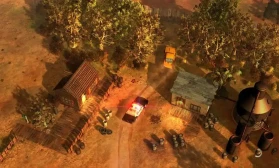Sudoku Master - Expert Puzzles: Advanced Techniques: A Comprehensive Review
Introduction
Sudoku is a logic-based number puzzle that has captivated millions worldwide. While beginners rely on basic elimination techniques, advanced solvers must master complex strategies to tackle expert-level puzzles. Sudoku Master - Expert Puzzles: Advanced Techniques is a guide designed for enthusiasts looking to elevate their solving skills. This review explores the book’s content, effectiveness, and whether it delivers on its promise to turn players into true Sudoku masters.
Overview of the Book
Sudoku Master - Expert Puzzles: Advanced Techniques is structured into three main sections:
- Advanced Solving Techniques – Covers strategies beyond simple elimination, such as X-Wing, Swordfish, and XY-Wing.
- Expert-Level Puzzles – Provides a collection of challenging grids to apply learned techniques.
- Step-by-Step Solutions – Offers detailed breakdowns of solving paths for each puzzle.
The book assumes prior familiarity with basic Sudoku rules, making it ideal for intermediate to advanced players.
Key Advanced Techniques Explained
1. X-Wing Technique
The X-Wing method involves identifying two rows (or columns) where a candidate number appears in exactly two cells each, forming a rectangle. If these align, the number can be eliminated from other cells in the intersecting columns (or rows).
Example:
If the number 7 appears in (R1, C2) and (R1, C5) in Row 1, and in (R4, C2) and (R4, C5) in Row 4, then 7 can be removed from all other cells in Columns 2 and 5.
2. Swordfish Technique
An extension of X-Wing, Swordfish applies to three rows (or columns) where a candidate appears in two or three cells per row, forming a linked pattern.
Example:
If 3 appears in:
- Row 1: (C2, C7)
- Row 5: (C2, C8)
- Row 9: (C7, C8)
Then 3 can be eliminated from all other cells in Columns 2, 7, and 8.
3. XY-Wing Technique
This strategy involves three cells forming a "pincer" effect. If Cell A has candidates (X, Y), Cell B (X, Z), and Cell C (Y, Z), then any cell seeing both B and C cannot contain Z.

Example:
- Cell A: (5, 7)
- Cell B: (5, 9)
- Cell C: (7, 9)
If a cell shares a row/column/box with both B and C, 9 can be eliminated from it.
4. Coloring & Forcing Chains
For highly complex puzzles, the book introduces coloring (tracking a candidate’s possible positions) and forcing chains (testing hypothetical placements to deduce contradictions).
Strengths of the Book
✅ Clear Explanations – Each technique is broken down with visual examples.
✅ Progressive Difficulty – Puzzles gradually increase in complexity.
✅ Detailed Solutions – Every puzzle includes a step-by-step walkthrough.
✅ Practical Exercises – Reinforces learning through application.
Potential Drawbacks
❌ Not for Beginners – Assumes prior knowledge of basic Sudoku rules.
❌ Limited Advanced Variations – Does not cover exotic variants like Killer Sudoku.
Final Verdict
Sudoku Master - Expert Puzzles: Advanced Techniques is an excellent resource for players seeking to conquer expert-level puzzles. The structured approach, clear examples, and challenging exercises make it a valuable addition to any Sudoku enthusiast’s library. While beginners may find it overwhelming, intermediate and advanced solvers will benefit greatly from its in-depth strategies.
Rating: ⭐⭐⭐⭐½ (4.5/5)
Tags: #Sudoku #PuzzleSolving #LogicGames #AdvancedSudoku #BrainTraining #BookReview










